In his campaign to annex Taiwan, Chinese President Xi Jinping seems to take inspiration from Emperor Kangxi of the Qing Dynasty, who managed to successfully conquer the island. To analyze the war-like situation unfolding in the Taiwan Strait, it is important to review history, as the evolution of today's cross-strait relations resembles what happened more than 300 years ago. An ancient Chinese proverb says: "Those who go to the past know the present. Take the ancient as a mirror, you can know the rise and fall."
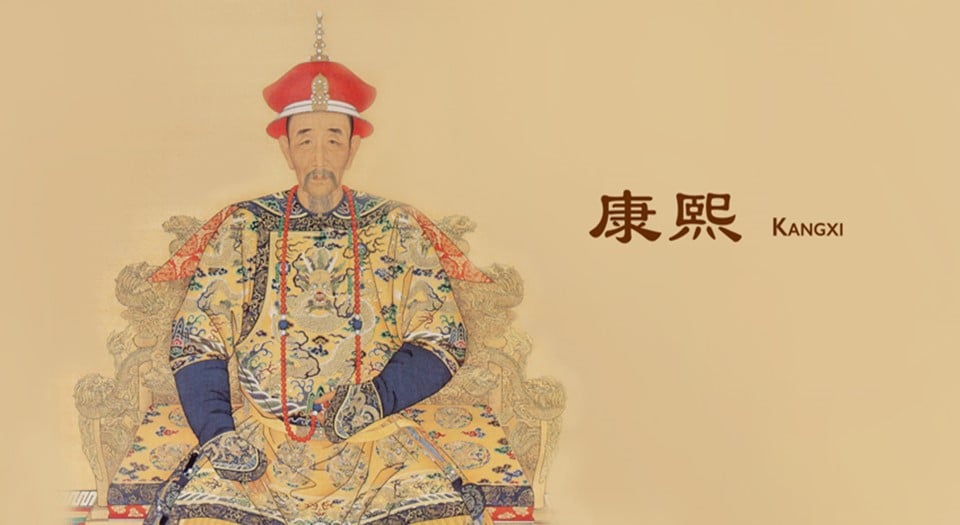
Emperor Kangxi (Source: Weibo)
Emperor Kangxi's Annexation Of Taiwan Was An Alternation Of War And Negotiation
In February 1661, Kangxi (康熙), the second emperor after the Qing Dynasty established the dynasty's capital in Beijing, acceded to the throne at the age of six. At the time, the Qing Dynasty was unstable, and southern China was not completely unified.
As he grew up, Emperor Kangxi took a series of measures to strengthen his power, such as arresting the potent Oboi (鳌拜), a commander and minister who had overseen the government when Kangxi was a minor.[1] Later, Kangxi began to concentrate his efforts to quell the Revolt of the Three Feudatories (in Southern China) against the Qing Dynasty, which was led by the powerful commander Wu Sangui (吴三桂).[2][3] However, his attention was focused on the conquest of Taiwan.
Emperor Kangxi's annexation of Taiwan was an alternation of war and negotiation, a contest of strength and wisdom with rivals, and a long-term process of winning hearts and minds.
In fact, in 1662, the year after Kangxi ascended the throne, Zheng Chenggong (郑成功),[4] a general in the late Ming Dynasty, captured Taiwan and drove out the Dutch (it is worth noting that this event is comparable to the recovery of Taiwan by the Kuomintang-led Republic of China (ROC) in 1945, as Japan had to end its rule in the island, after the defeat by the allied forces in WWII). However, Zheng Chenggong died soon after capturing Taiwan and his ruling group began to be internally divided.[5]
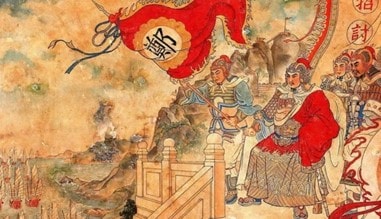
Zheng Chenggong (Source: Sogou.com)
Hence, in the same year, Emperor Kangxi tried to take advantage of the situation, and sent emissaries to persuade Zheng Chenggong's son Zheng Jing (郑经), who succeeded to his father's title of "Prince of Yanping" (延平王), to surrender to the Qing Dynasty. In order to relieve the political pressure from both inside and outside his ruling clique, Zheng Jing began to negotiate with the Qing Dynasty and handed over the royal edict and seal granted by the Emperor of the Southern Ming Dynasty.[6] However, the central government of the Qing Dynasty demanded that the Taiwanese people move back to the mainland, shave their heads, and change their uniforms as a sign of submission. In the end, Zheng Jing refused to comply, and the negotiations were unsuccessful.
In the second year of Kangxi's rule (1663), the Qing dynasty invited the Dutch to form an allied army to attack Xiamen, the last stronghold of the Zheng clan in the mainland. As a result, Zheng Jing was defeated and forced to withdraw from Xiamen and flee to Taiwan. The event can be compared to when, in 1949, after losing in the Chinese Civil War with the forces of the Chinese Communist Party (CCP), the Kuomintang-led Republic of China (ROC) withdrew and relocated to Taiwan.
The Qing Dynasty took advantage of the victory and sent naval forces to Taiwan, but returned unsuccessfully due to a sudden typhoon.
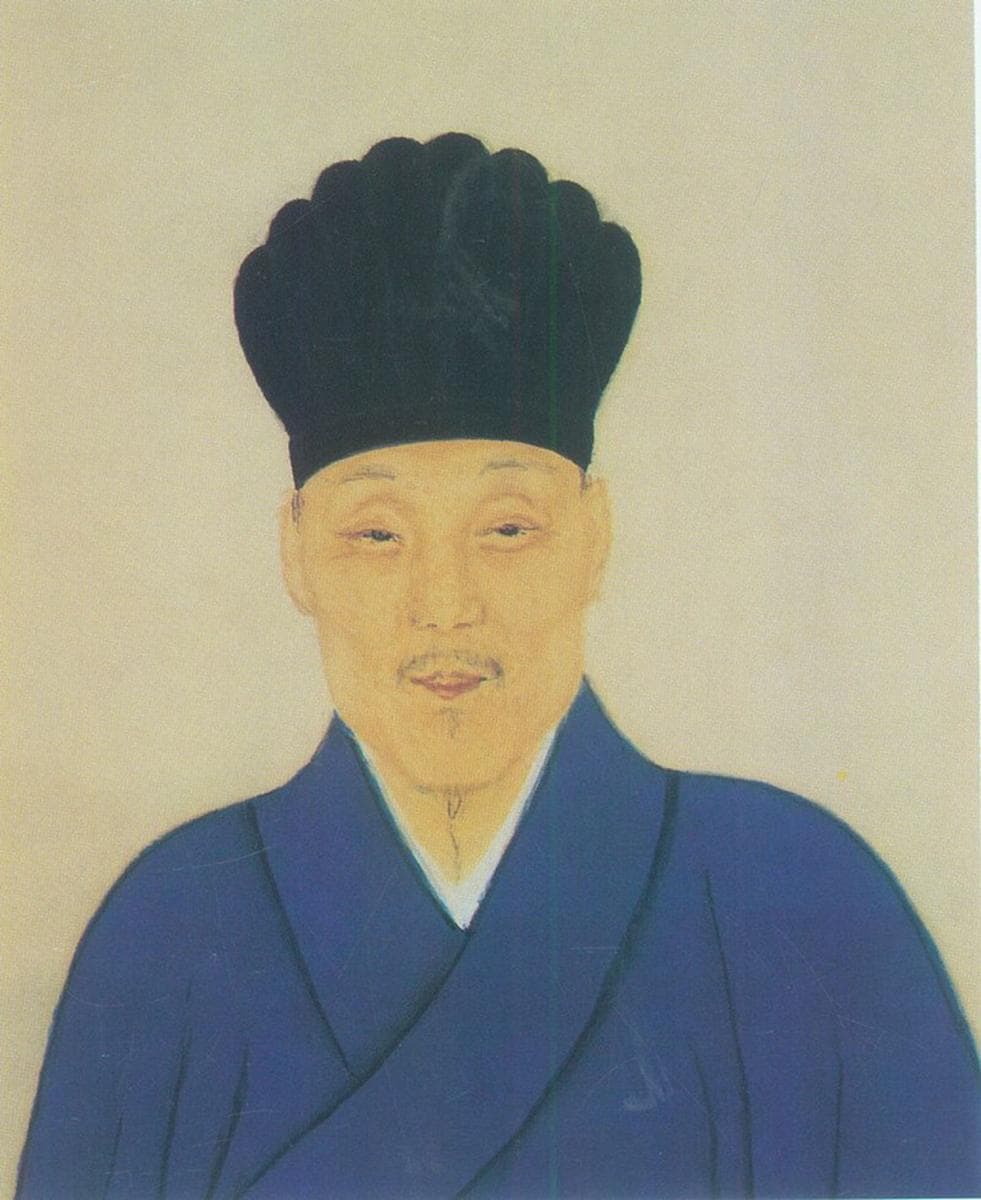
Zheng Jing (Source: Gugong.net)
Emperor Kangxi: "Taiwan Belongs To China, And The People There Are All Chinese – Why Should It Be Treated As A Foreign Country?"
Despite armed confrontation, both sides of the Taiwan Straits had a certain desire for peace. On one side, the Qing dynasty's rule over all of China was unstable: The rebellious forces in the Revolt of the Three Feudatories in the south had not been eradicated, and the economic situation was precarious, so Emperor Kangxi was unable to spend huge sums of money to deploy troops at sea. On the other side, Zheng's ruling group in Taiwan, which had a small population, backward production and economic difficulties, was in urgent need of food and material supplies from the mainland. Moreover, most people of Zheng's group were from Fujian province, who had been away from home for a long time and were feeling homesick. Therefore, there was an endless stream of people sneaking back to the mainland.
Emperor Kangxi was bent on taking over Taiwan, but at the same time he wanted to avoid a war. Then, the Emperor proposed in the negotiations that in exchange for the reunification of Taiwan with the mainland under the Qing jurisdiction, Zheng Jing would be granted a powerful position, and all his civil and military officials could continue to keep their posts.
However, Zheng Jing did not agree. Instead, he suggested that Taiwan would pay a tribute as a vassal state of the Qing Dynasty, like Korea did at the time. The idea behind the offer was actually to make Taiwan an independent state, but Emperor Kangxi was against this option. Emperor Kangxi then said: "Taiwan belongs to China, and the people there are all Chinese. Why should it be treated as a foreign country?"
Hence, negotiations between the two sides broke down and fighting resumed. Zheng Jing then took advantage of the political instability inside the mainland and joined Wu Sangui, the leader of the Revolt of the Three Feudatories, in the fight against the Qing Dynasty. In 1674, the armies of Wu Sangui, Zheng Jing and Geng Jingzhong (one of the powerful military commanders ruling the three feudatories, who later came back to the Qing court)[7] captured Xiamen, Zhangzhou and Quanzhou in Fujian province, and Chaozhou and Huizhou in Guangdong province in 1674.
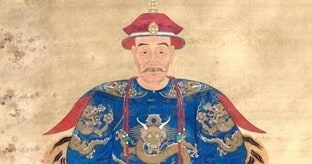
Wu Sangui (Source: Palace Museum Archive)
Emperor Kangxi then ordered a counterattack. After eight years of battles, in 1681, the Revolt of the Three Feudatories was finally quelled.[8] Zheng Jing was unable to support his small army alone with no allies, as the Qing army compared to his was so powerful.[9] Therefore, Zheng Jing withdrew again to Taiwan. Thus, the Qing Dynasty tried another peace effort, by making a major concession: leaving Zheng Jing to govern the island after the unification of Taiwan. In a way, Emperor Kangxi suggested 360 years ago the concept of "one country, two systems." However, Zheng Jing again insisted on Taiwan independence, and said: "Please, follow the example of Ryukyu and Goryeo."[10] Emperor Kangxi firmly disagreed, and the two sides remained in a state of hostility for a long time.
Taiwan, An Enemy Of The Mainland For 22 Years, Was Annexed By The Qing Dynasty
In the 20th year of Kangxi's rule (1681), Zheng Jing died and his 12-year-old son Zheng Keshuang (郑克塽) succeeded him as "Prince of Yanping." At that time, Emperor Kangxi had completely put down the Revolt of the Three Feudatories, the central power had been consolidated to an unprecedented degree, and conditions were ripe for the conquest of Taiwan and national unification. Emperor Kangxi therefore moved to unify Taiwan by force.
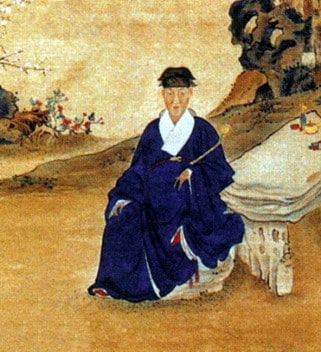
Zheng Keshuang (Source: M.qulishi.com)
During the period that the Qing Government was discussing how to solve the Taiwan question, there were many Qing Dynasty's officials and members of the intellectual elite in mainland China who opposed the invasion of Taiwan by force. However, Emperor Kangxi overruled the many opposition views and adopted the policy of "using both suppression and pacification to stabilize the maritime territory."
In the 22nd year of Kangxi's rule, on July 8, 1683, General Shi Lang (施琅), the commander of the Qing navy, led more than 20,000 troops and 200 warships across the sea to the east. The son of Zheng Jing, Zheng Keshuang, sent Liu Guoxuan (刘国轩), a brave and battle-hardened general, to defend the Penghu (澎湖) islands (an archipelago in the Taiwan Strait) with a force nearly equal in number to Shi Lang's. The two armies fought fiercely for seven days and nights in what is now known as the Battle of Penghu, and in the end Zheng's elite troops were wiped out. The Qing army sank 159 enemy ships and 12,000 Zheng soldiers were killed or wounded. Their corpses floated all over the sea. Liu Guoxuan remained with only 31 ships and escaped to Taiwan.
After the defeat in Penghu, Zheng Keshuang began to panic. Under the instructions of emperor Kangxi, General Shi Lang actively sought to win the hearts and minds of the captured Taiwanese soldiers, who were treated with courtesy and rewarded with silver and rice. After treatment, the wounded soldiers were released and sent back to Taiwan, in order to declare the Qing court's intention to appease Taiwan. The history books say that the people of Taiwan "all lost their will to resist and were willing to surrender, fearing that the emperor's army would not come early."
Under such circumstances, Zheng Keshuang was unable to resist, and took the advice of his teacher, General Liu Guoxuan, to submit to the Qing Dynasty. Hence, he sent a petition of surrender to the General of the Qing Dynasty Shi Lang. Emperor Kangxi decreed Shi Lang to accept Zheng's surrender and reaffirmed his previous promise: "If he can come back sincerely, he will be absolved of all his crimes, and if he thanks the imperial court for its arrangement, he should be ensured that his demands are met."
On August 11, 1683, the Qing army arrived in Taiwan. Zheng Keshuang led civil and military officials to meet the army on the shore.[11] Taiwan, an enemy of the mainland for 22 years, was annexed by the Qing Dynasty. In the 23rd year of Kangxi's rule (1684), the Qing Dynasty established the Taiwan Prefecture and three counties of Taiwan, Fengshan (凤山) and Zhuluo (诸罗), which were subordinate to Fujian province. The Qing Dynasty stationed 10,000 soldiers in Taiwan and Penghu respectively and set up government agencies to govern and defend the areas. Over 200 years later, in 1885, the Qing government established the Taiwan province.
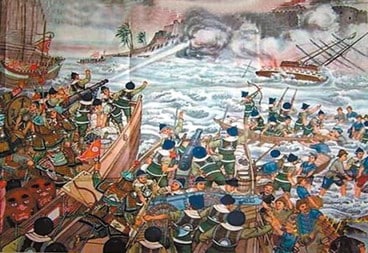
The Battle of Penghu (Source: 52lishi.com)
Conclusion
In the Battle of Penghu, the Qing army had 24,000 soldiers and a total of 238 ships, while the Zheng's army had a force of 20,000 soldiers, and 200 ships. There was a little difference in military strength, and the Qing army had no obvious superiority. However, the casualties were shocking: Only 329 soldiers from the Qing army were killed and 1,800 wounded, while 14,000 soldiers from the Zheng were killed.
The overwhelming victory of the Qing army against the Zheng's army was the result of taking the initiative to create momentum, careful planning, and full preparation. Emperor Kangxi trusted and boldly used General Shi Lang, who had been Zheng Chenggong's righthand man and was intimately familiar with Zheng army's operations. After a disagreement with Zheng Chenggong, Shi Lang defected to the Qing Dynasty in 1646, and in retaliation the Zhengs killed Shi Lang's father and younger brother.[12]
The Qing Dynasty seized Penghu, the outlying island of Taiwan, destroyed the psychological defense line of the Taiwan army, and then exercised conciliation to break its will. The CCP used this pattern, which can be defined as the Kangxi model, in the capture of Peiping (now Beijing) in 1949 against the Kuomintang: attack the outside of Peiping with force, surround Peiping without attacking it, wage a powerful psychological warfare campaign against the garrison of Peiping (the Fu Zuoyi division of the Kuomintang), facilitate peace negotiations, and finally win Peiping peacefully.
Xi Jinping, a reader of history, would surely love to emulate the Emperor Kangxi and achieve the annexation of Taiwan. The Kangxi model would be less costly for the CCP than an all-out war against Taiwan. In a "Kangxi" scenario, China would attack Taiwan on its periphery and then encircle the island, forcing its government to negotiate for peace, thus taking over Taiwan.
However, in contrast with the period of Emperor Kangxi, Taiwan today has the support of third parties such as the United States and Japan. Further, the people's hearts and mind on the island are seriously turning away from Beijing. Therefore, it may be difficult for the CCP to copy the Kangxi model. For this reason, the Chinese army maybe preparing for a total war against Taiwan.
*Chris King is Senior Research Fellow for the MEMRI Chinese Media Studies Project. King was an active participant in the student protests in China in 1989.
[1] When Emperor Kangxi ascended the throne, he was six years old. His father, Emperor Shunzhi, left a testamentary edict before his death appointing four auxiliary ministers (Sonin, Suksaha, Ebilun, and Oboi) to assist Emperor Kangxi. In May 1669, Emperor Kangxi took full control of the court.
[2] The three southern feudatories were under Wu Sangui (吴三桂), Shang Kexi (尚可喜) and Geng Jingzhong (耿精忠). However, the Revolt of the Three Feudatories was mainly led by Wu Sangui. Shang Kexi, who was in charge of Guangdong, remained loyal to the Qing Dynasty. In 1673 (the 12th year of the Kangxi's reign), Shang Kexi's request to return to his hometown of Liaodong was approved. But in the same year, unexpectedly, Wu Sangui rebelled against the Qing dynasty in Yunnan, and the Revolt of the Three Feudatories broke out. The Qing Court ordered Shang Kexi to stay in Guangdong to guard. Wu Sangui once wrote a letter to Shang Kexi, urging him to rebel against the Qing Dynasty. However, Shang Kexi submitted Wu Sangui's letter to the Qing Court to show his loyalty. During the Revolt of the Three Feudatories, Shang Kexi's son, Shang Zhixin (尚之信), briefly participated in the Revolt of the Three Feudatories, but soon returned to the Qing Dynasty. Even so, when Shang Kexi learned that his son cooperated with Wu Sangui, he tried to commit suicide but failed, and soon died of depression.
Geng Jingzhong was highly trusted and respected by the Qing court. His grandfather had already surrendered to the Qing army and been crowned a vassal king. Geng Jingzhong himself was the son-in-law of Prince Su in the early Qing Dynasty. However, after Wu Sangui's rebellion, Geng Jingzhong joined in. Emperor Kangxi considered Geng Jingzhong a traitor. Nevertheless, in 1676, Geng Jingzhong came back to the Qing court, and was allowed to continue leading his army to quell the rebellion. He hoped to redeem himself by doing so. However, after the Revolt of the Three Feudatories completely ended, Emperor Kangxi ordered that Geng Jingzhong be tortured to death in early 1682.
[3] Britannica.com/biography/Wu-Sangui, accessed November 8, 2021.
[4] Zheng Chenggong was the son of Zheng Zhilong (郑芝龙), who was a pirate operating in southern China, Taiwan, and Japan. Zheng Zhilong studied business with his uncle in Macau from 1621 to 1623. While in Macau, Zheng Zhilong was baptized into Catholicism in order to gain the trust of Portuguese merchants. In 1624, he was assigned by his uncle to escort goods to Nagasaki, Japan, where he married a Japanese woman and fathered Zheng Chenggong. Later, in 1628, Zheng Zhilong was summoned by the Ming government and became a naval commander.
[5] After he defeated the Dutch East India Company, Ming loyalist Koxinga (i.e., Zheng Chenggong, 1624-1662) founded the Kingdom of Tungning in Taiwan in 1662.
[6] The imperial edict and seal were granted by Zhu Youlang (朱由榔), the Yongli Emperor (永历皇帝) of the Southern Ming Dynasty, to Zheng Chenggong (郑成功) in 1655. After Zheng Chenggong's death, Zheng Jing (Zheng Chenggong's son) and his uncle Zheng Xi (郑袭; Zheng Chenggong's youngest brother) fought over the succession for half a year. In 1662, Zheng Jing succeeded to his father's title of "Prince of Yanping" (延平王). At that point, the tile was no longer conferred by the Southern Ming Dynasty, as the last Emperor, the Yongli Emperor, was strangled by Wu Sangui (吴三桂) in Kunming, Yunnan, in June 1962. Wu Sangui was instrumental in the fall of the Ming Dynasty and in helping to establish the Qing dynasty in its place.
[7] See Endnotes Two and Nine.
[8] The outbreak of the Revolt of the Three Feudatories in 1673 caused the Qing court to lose control of 11 provinces during the most serious period of the battle (Yunnan, Guizhou, Sichuan, Shaanxi, Gansu, Hunan, Guangdong, Guangxi, Fujian, and large parts of Zhejiang and Jiangxi). The rebellion was dominated by Wu Sangui's army. In March 1678, Wu Sangui proclaimed himself emperor in Hunan, but died of illness in August of that year. His grandson Wu Shifan succeeded him. In 1681, Later, in Kunming, Yunnan, the Qing army managed to quell the revolt. Wu Shifan committed suicide, and the eight-year Revolt of the Three Feudatories was put to rest.
[9] Zheng Jing lacked strategic vision. In 1674, Geng Jingzhong (see Endnote Three) responded to Wu Sangui's call to revolt against the Qing dynasty in Fujian and invited Zheng Jing in Taiwan to join him. Hence, Zheng's and Geng's armies fought for Quanzhou and Zhangpu in 1674. However, in 1676, Geng surrendered to the Qing Dynasty. After losing Geng in the fight against the Qing, Zheng Jing had to face the Qing army directly. Due to the weakness of Zheng Jing's forces, he was soon defeated by the Qing army and had to retreat. The Qing Dynasty was aware of the internal contradictions of its opponents and took advantage of the selfish interests and contradictions of all parties to create discord, in order to defeat them one by one. During the Revolt of the Three Feudatories, only Wu Sangui, the initiator, was the strongest, and his army was very strong and effective. In the latter period of the revolt, it was basically Wu Sangui's army fighting the Qing army. Some historians believe that if Wu Sangui had not been too old and in poor health, it would have been possible for his army and the Qing army to rule separately along the Yangtze River.
[10] The Ryukyu Kingdom was a kingdom in the Ryukyu Islands, which todays is the Okinawa Prefecture in Japan, from 1429 to 1879. Under the Ming and Qing dynasties, the Ryukyu Kingdom was a tributary state. Goryeo was also a tributary state in the Korean peninsula. It is worth noting that the Goryeo Dynasty ruled Korea from 918 to 1392. Many Chinese at the time, including Emperor Kangxi, used both names to refer to the dynasty on the Korean Peninsula.
[11] After surrendering to the Qing dynasty, Zheng Keshuang was given the title of Duke of Hanjun and continued to live in Beijing.
[12] At the age of 17, Shi Lang was already a competent general under Zheng Zhilong, Zheng Chenggong's father. He surrendered to the Qing Dynasty with Zheng Zhilong in 1646 (See Endnote Four). Later, at Zheng Chenggong's recruitment, Shi Lang joined the camp of "resisting the Qing Dynasty and restoring the Ming Dynasty" in 1648 and became a general under Zheng Chenggong, with outstanding military achievements. However, in 1651, Zheng Chenggong gave him the cold shoulder because of disagreements with him over military strategy and command. Later, in 1652, Shi Lang killed Zeng De, Zheng Chenggong's confidant, which led Zheng Chenggong to capture Shi Lang, his father and his younger brother. Shi Lang fled to the area controlled by the Qing Dynasty. Zheng Chenggong was furious and killed Shi Lang's father and younger brother. Therefore, Shi Lang was completely thrown into the arms of the Qing Dynasty.





